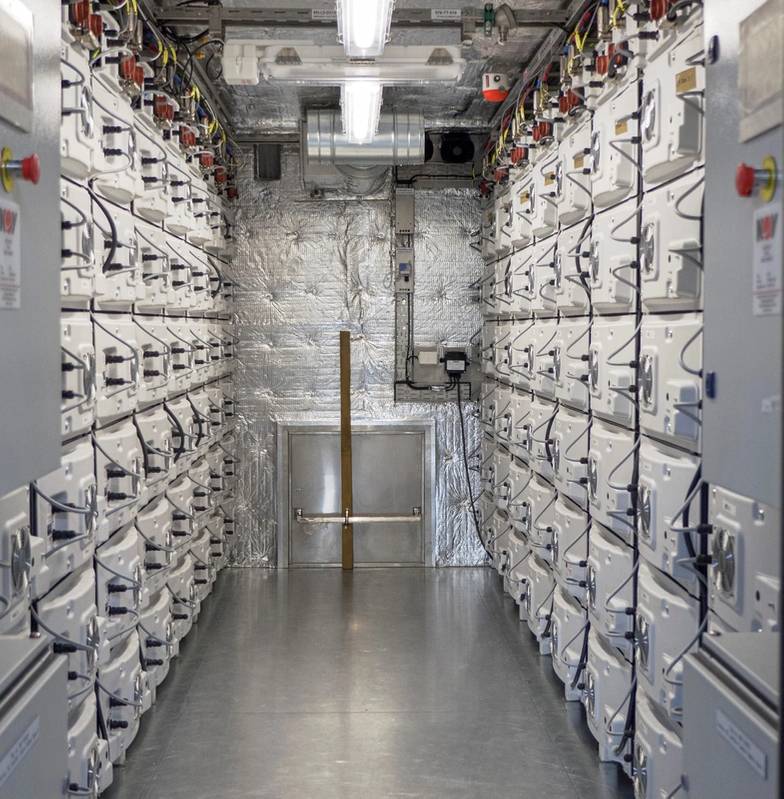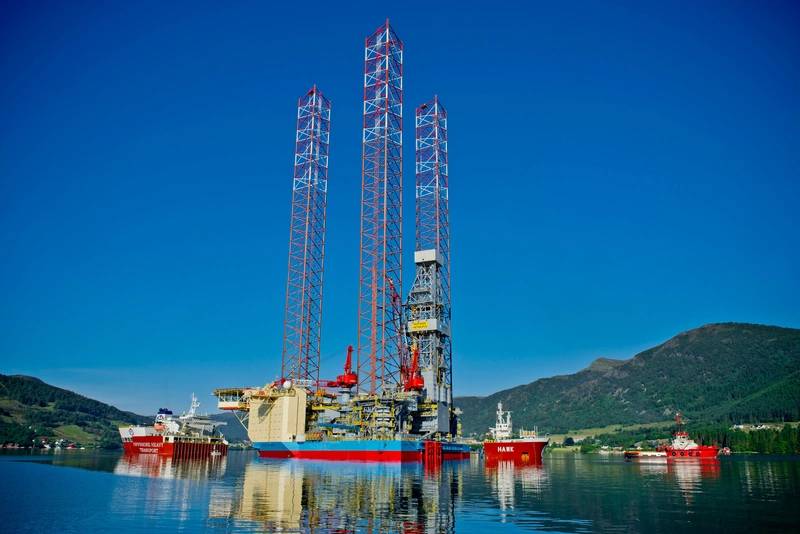


The fuel savings gained by installing energy storage systems on oil and gas platforms are significant, but it’s the safe-ty benefits that might overcome what has been a relatively slow uptake of late.
Industry lore has it that drilling rigs say hello to each other using the gensets onboard to make smoke signals. The reality is that the engineers are often just running the generators at low load to ensure they have spinning reserve. The soot released is a byproduct of that sub-optimal load and the need to maximize energy security.
Energy security is paramount offshore, so sub-optimal energy production can be maintained for days or weeks, for example in adverse weather conditions, due to the long time needed to stop and restart generators.
In 2019, Woodside claimed a first when it installed a 1MW battery ESS on the Goodwyn A production platform to provide spinning reserve so that three gas turbine generators can run optimally rather than four sub-optimally.
The same year, Siemens Energy claimed a first for the installation of its BlueVault ESS on the West Mira semi-sub drilling rig. Here it is used for peak shaving during topside operations as well as spinning reserve in DP operations, nearly halving the run time of the platform’s diesel engines. Siemens Energy’s subsequent installations include the jack-ups Maersk Intrepid and Maersk Integrator.
Between 2019 and 2022, Corvus Energy delivered energy storage for NOV PowerBlade installations on four Odfjell Drilling semi-subs: Deepsea Aberdeen, Deepsea Atlantic, Deepsea Stavanger and Deepsea Nordkapp. The system captures electrical braking energy from drilling or hoisting systems and provides it to the power grid to enable peak shaving.
One of the world's most advanced offshore construction vessels, the North Sea Giant, was the first vessel where batteries (from Corvus Energy) were part of a DP3 power management system.
Corvus Energy SVP sales, Efraim Kanestrom, notes some cooling off on retrofit projects over the last couple of years due to rising oil prices and the greater geopolitical need for energy security. It’s a temporary lull that he believes could be overcome soon even if the focus on emission reduction and energy efficiency is temporarily reduced in the industry. The operators still need to focus on the safety of crew and assets. NOV powerblade Corvus dolphin lightweight ESS scaled .
NOV powerblade Corvus dolphin lightweight ESS scaled .
Image courtesy Corvus
In addition to the environmental and financial benefits, hybridization reduces soot and NOx emissions, a health benefit for offshore crews. Blackout prevention and better station-keeping are also beneficial to operational safety, reducing downtime and improving crew well-being.
Still, the industry has been reticent over concerns that the ESS itself could be a hazard by acting as an ignition source in an already high-risk environment. Kanestrom notes that the company’s Orca system was the first ESS to be approved for use on offshore oil and gas platforms and that its in-built safety systems include the possibility to shut down the system completely (with no risk for sparks) in case of an emergency situation with hydrocarbons on deck.
The safety features of the Siemens Energy BlueVault system include using liquid cooled modules built into a stand-ard Siemens Energy switchboard system. Each module is connected touch-free at the rear of the system to the bat-tery interface module through short-circuit-proof rails. For additional protection of the crew and the establishment of robustness against internal faults, the plant is enclosed and equipped with doors, so the design is like a distribu-tion switchboard where several racks are connected through the same internal busbar. Arcing cannot occur on either the battery or the busbar side of the battery interface module, so the design will prevent an internal electri-cal failure from igniting the battery modules, regardless of the cause of the failure.
 Siemens Energy’s installations include the jack-up Maersk Intrepid.
Siemens Energy’s installations include the jack-up Maersk Intrepid.
Image Courtesy Siemens Energy
 Demand is growing significantly, says George Bitar, Siemens Energy business development manager for offshore solutions.
Demand is growing significantly, says George Bitar, Siemens Energy business development manager for offshore solutions.
Image Courtesy Siemens Energy
Siemens Energy business development manager for offshore solutions, George Bitar, says demand is growing signifi-cantly for the system offshore for both newbuildings and retrofit, partly as a result of the reduction in opex that BlueVault offers through its advanced digital battery monitoring system.
Battery manufacturer Echandia has entered the market too, with a 2023 order for an ESS for a jack-up drilling rig in the Middle East.
Professor Elisabetta Tedeschi of the Norwegian University of Science and Technology (NTNU) and University of Trento says that while uptake has been limited to date, lithium ion batteries have only recently experienced wide adoption in several other sectors due to a relatively steep cost decrease. As an example, according to the Interna-tional Energy Agency, the global installed capacity of grid-scale battery ESS was 28GW as of 2022, of which 11GW was added in 2022 alone. Offshore oil and gas platforms may represent the next frontier.
Tedeschi and her team have developed a versatile seven-step technology suitability assessment for the installation of ESS on offshore platforms. Testing the assessment methodology on the operating profile of one North Sea plat-form, the required ESS capabilities were calculated based on the need to provide maximum power for six hours to reduce the 77MW load peak by 5%. The results indicated that lithium iron phosphate (LFP) was the most suitable battery chemistry for peak shaving. LFP has the safety advantage that it is thermally stable, so there is no risk of thermal runaway.
A second case study indicated LFP and lithium nickel manganese cobalt (NMC) were jointly most suited for providing spinning reserve on another platform.
In both cases, safety was an important consideration, along with factors such as high volumetric density, low mainte-nance and solid operating experience.
Using offshore renewable power offers an alternative way of reducing emissions on production platforms, but this is unlikely to eliminate the need for ESS. Tedeschi’s team have evaluated the lifecycle costs of using ESS for primary frequency control to ensure the intermittency of wind power generation does not result in sudden critical fre-quency fluctuations.
Lithium-ion capacitor technology from Beyonder in Norway was regarded as a promising technology. This combina-tion of battery cell and supercapacitor is very safe, with reduced risk of thermal runaway when compared to lithium ion battery chemistries. However, the technology is not yet mature, so it is yet to see large-scale adoption.
That is expected to change in the future, and Tedeschi co-researcher Ayotunde A. Adeyemo says ESS can play a major role in upstream decarbonization and increase the penetration of renewable energy.
“Smoke signaling” could soon be a thing of the past. Offshore oil and gas platforms may represent the next frontier, said Professor Elisabetta Tedeschi of the Norwegian University of Science and Technology (NTNU) and University of Trento
Offshore oil and gas platforms may represent the next frontier, said Professor Elisabetta Tedeschi of the Norwegian University of Science and Technology (NTNU) and University of Trento
Image courtesy NTNU